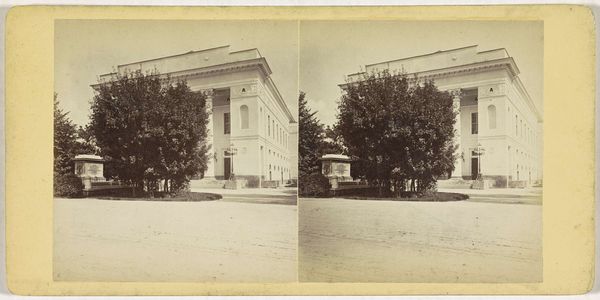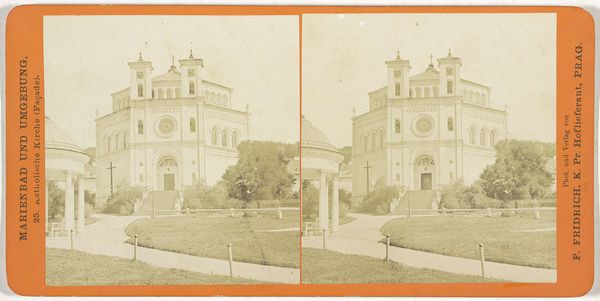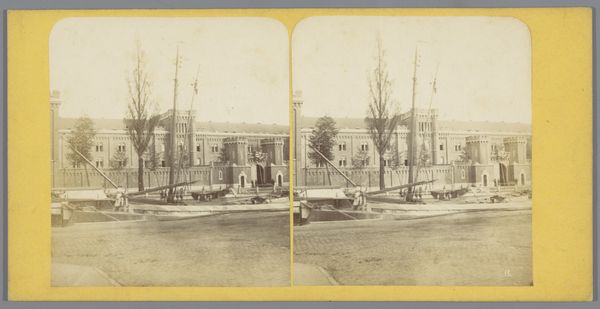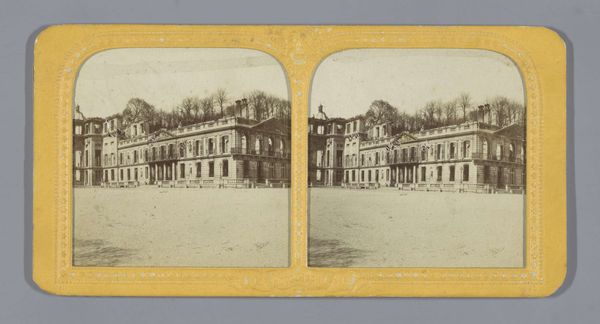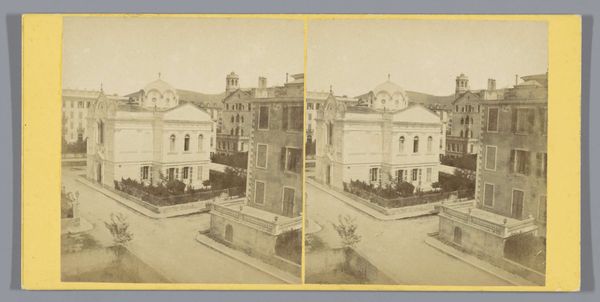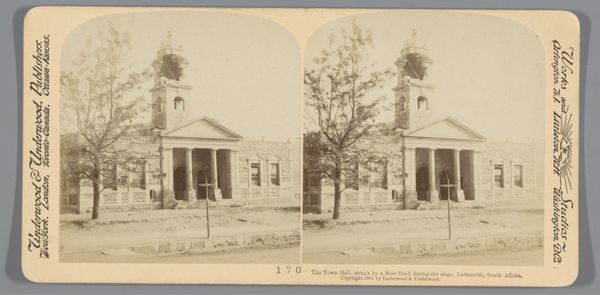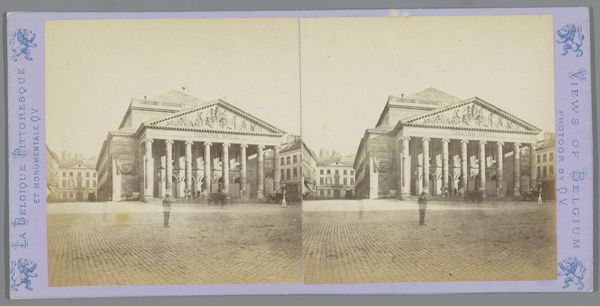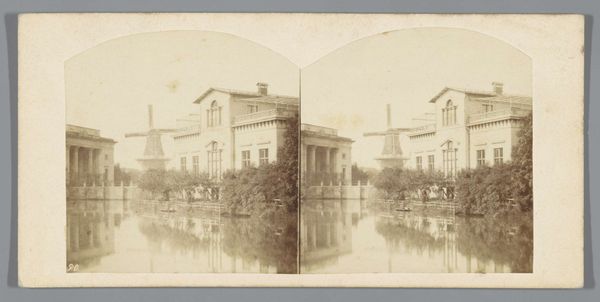
Dimensions: height 85 mm, width 170 mm
Copyright: Rijks Museum: Open Domain
Editor: This is a stereoscopic albumen print titled *Gevel van de Sint-Paulus buiten de Muren te Rome*, or *Façade of Saint Paul Outside the Walls in Rome*, by Lorenzo Suscipi, created sometime between 1850 and 1880. The sepia tones give the image an antiquated, almost dreamlike quality, yet there's also a stark realism to the architecture. What does this work evoke for you? Curator: It's interesting how this photograph, intended as a visual document, simultaneously reflects the burgeoning tourist industry and the evolving perception of religious authority in mid-19th century Rome. The choice of a grand, neoclassical facade is telling; what kind of statement do you think the photographer might have been trying to make about the church's position? Editor: Maybe trying to convey a sense of enduring power or legitimacy? Like, even amidst social changes, the church still stands strong? Curator: Precisely. The photograph is not just a record of a building, it's an active participant in shaping public opinion. Consider how the relatively recent invention of photography democratized image consumption, while also presenting a very curated perspective. Who had access to such images, and what was their purpose? Editor: So it's not just about the architecture, but also who's consuming the image and how they might be interpreting it? Curator: Exactly! It speaks to how institutional power leverages art and technology for its own narratives. Editor: That gives me a whole new appreciation for something I initially just saw as a pretty picture. Thanks! Curator: My pleasure. Recognizing the interplay of social forces and artistic representation enriches our understanding and informs public discourse.
Comments
No comments
Be the first to comment and join the conversation on the ultimate creative platform.

